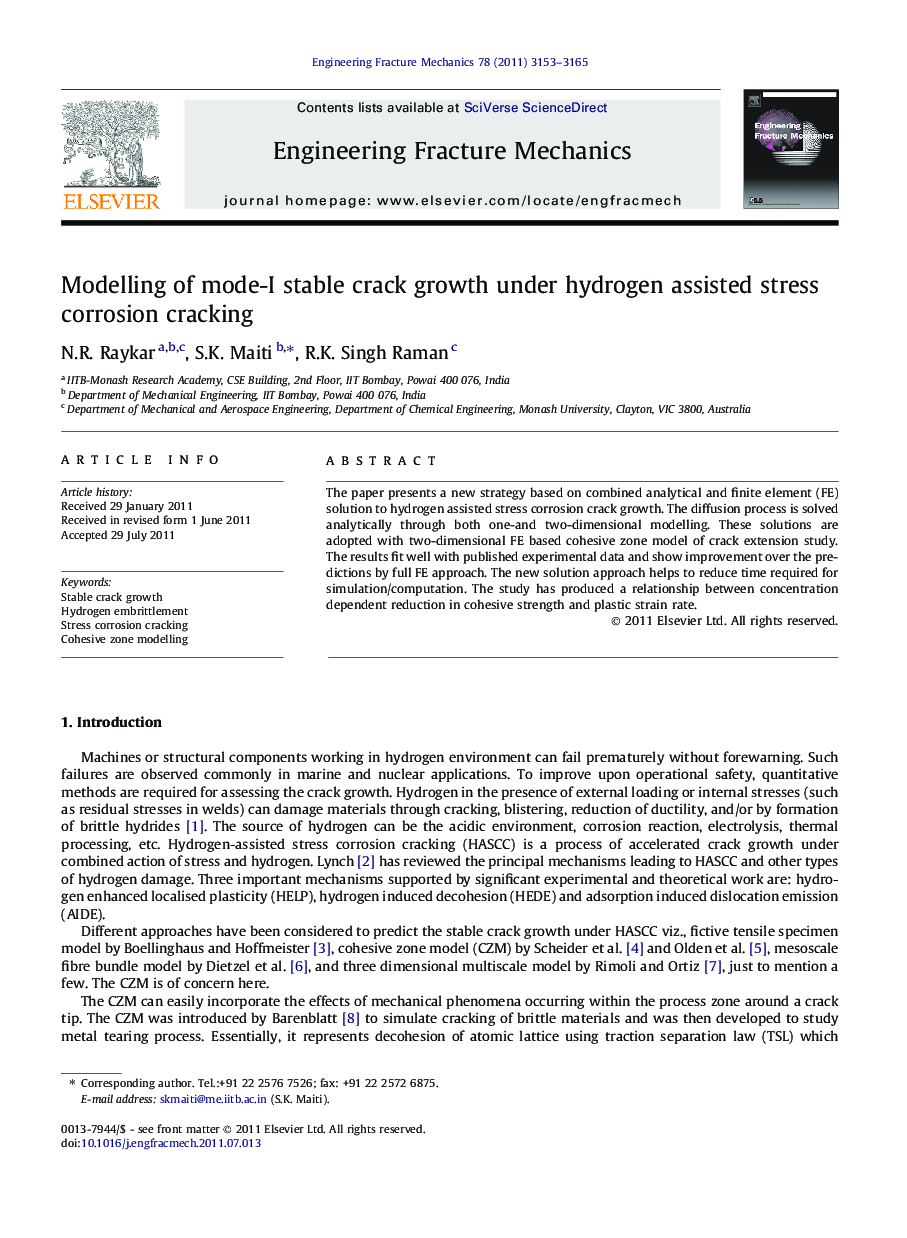| Article ID | Journal | Published Year | Pages | File Type |
|---|---|---|---|---|
| 770755 | Engineering Fracture Mechanics | 2011 | 13 Pages |
The paper presents a new strategy based on combined analytical and finite element (FE) solution to hydrogen assisted stress corrosion crack growth. The diffusion process is solved analytically through both one-and two-dimensional modelling. These solutions are adopted with two-dimensional FE based cohesive zone model of crack extension study. The results fit well with published experimental data and show improvement over the predictions by full FE approach. The new solution approach helps to reduce time required for simulation/computation. The study has produced a relationship between concentration dependent reduction in cohesive strength and plastic strain rate.
► A coupled analytical-FE method has been proposed to model crack growth under HASCC. ► Crack growth is modelled through cohesive zone modelling. ► Predicted variation of COD vs. crack growth is better than that by full FE approach. ► Time required to analyse a problem reduces significantly. ► The cohesive strength reduction factor has been related to plastic strain rate.
